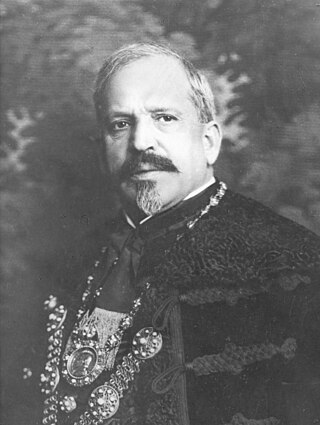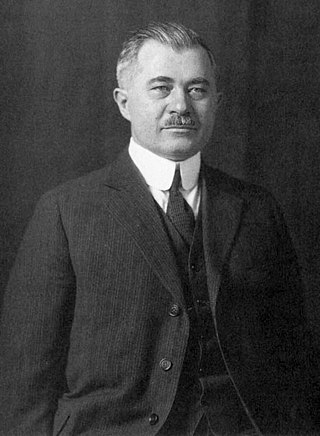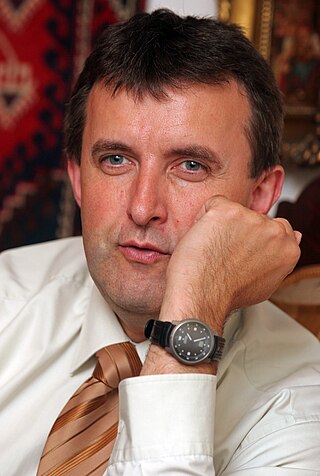
János Csonka (22 January 1852 in Szeged – 27 October 1939 in Budapest) was a Hungarian engineer, the co-inventor of the carburetor for the stationary engine with Donát Bánki, [1] patented on 13 February 1893.

János Csonka (22 January 1852 in Szeged – 27 October 1939 in Budapest) was a Hungarian engineer, the co-inventor of the carburetor for the stationary engine with Donát Bánki, [1] patented on 13 February 1893.
Csonka, self-educated [2] in many fields, [3] had no university degree, but became one of the greatest figures of Hungarian engineering industry, and with the carburetor he has heavily contributed to technical development in the world. He studied the Lenoir motor in Paris in 1874 and there he recognized the prospects of the internal combustion engine. He became head of the training workshop at the Technical University of Budapest at the age of 25 where he employed skilled workers at his own expense, which allowed him to use the workshop for his experiments. Csonka retired at the age of 73 and filed his last patent application at the age of 84.
As the head of the workshop in 1879, Csonka invented the first Hungarian gas engine, several other engines and vehicles, [4] including the first motor tricycle and postal automobile of the Hungarian Post, which were used for decades. In the 1890s, together with Donát Bánki, they produced the Bánki-Csonka engine and the first Hungarian motorcycle and motor-boat.

A carburetor is a device used by a gasoline internal combustion engine to control and mix air and fuel entering the engine. The primary method of adding fuel to the intake air is through the Venturi tube in the main metering circuit, though various other components are also used to provide extra fuel or air in specific circumstances.

Wilhelm Maybach was an early German engine designer and industrialist. During the 1890s he was hailed in France, then the world centre for car production, as the "King of Designers".

Gottlieb Wilhelm Daimler was a German engineer, industrial designer and industrialist born in Schorndorf, in what is now Germany. He was a pioneer of internal-combustion engines and automobile development. He invented the high-speed liquid petroleum-fueled engine.

Ottó Titusz Bláthy was a Hungarian electrical engineer. In his career, he became the co-inventor of the modern electric transformer, the tension regulator, the AC watt-hour meter.motor capacitor for the single-phase (AC) electric motor, the turbo generator, and the high-efficiency turbo generator.

Donát Bánki was a Hungarian mechanical engineer and inventor of Jewish heritage. In 1893 he invented the carburetor for the stationary engine, together with János Csonka. The invention is often, incorrectly credited to the German Wilhelm Maybach, who submitted his patent half a year after Bánki and Csonka. Bánki also greatly contributed to the design of compressors for combustion engines.
George Baldwin Selden was an American patent lawyer and inventor from New York who was granted a U.S. patent for an automobile in 1895.
The year 1893 in science and technology involved some significant events, listed below.

The Ganz Machinery Works Holding is a Hungarian holding company. Its products are related to rail transport, power generation, and water supply, among other industries.

Siegfried Samuel Marcus was a German inventor. Marcus was born of Jewish descent in Malchin, in the Grand Duchy of Mecklenburg-Schwerin. He made the first petrol-powered vehicle in 1864, while living in Vienna, Austria.

Ábrahám Ganz was a Swiss-born iron manufacturer, machine and technical engineer, entrepreneur, father of Ganz Works. He was the founder and the manager of the company that he made the flagship of the Hungarian economy in the 19th century. Despite his early death in 1867 the company remained one of the strongest manufacturing enterprise in Austria-Hungary. Many famous engineers worked at Ganz Works inter alia Károly Zipernowsky, Ottó Bláthy, Miksa Déri, András Mechwart, Kálmán Kandó, Donát Bánki, János Csonka and Theodore von Kármán and several world-famous inventions were done there, like the first railway electric traction, or the invention of the roller mill, the carburetor, the transformer and the Bánki-Csonka engine.

Daimler-Motoren-Gesellschaft was a German engineering company and later automobile manufacturer, in operation from 1890 until 1926. Founded by Gottlieb Daimler (1834–1900) and Wilhelm Maybach (1846–1929), it was based first in Cannstatt. Daimler died in 1900, and their business moved in 1903 to Stuttgart-Untertürkheim after the original factory was destroyed by fire, and again to Berlin in 1922. Other factories were located in Marienfelde and Sindelfingen.

Farkasréti Cemetery or Farkasrét Cemetery is one of the most famous cemeteries in Budapest. It opened in 1894 and is noted for its extensive views of the city.

József Galamb was a Hungarian mechanical engineer, most known as main-engineer for designing the Ford Model T.
The Csonka was a Hungarian automobile manufactured by János Csonka (1852–1939) in Budapest from 1909 until 1912.
MÁG stands for "Magyar Általános Gépgyár Rt". It was the most prevalent Hungarian vehicle manufacturer before World War II, and was based in Budapest. Its roots date back to 1901, when Podvinecz & Heisler, started assembling Austrian Leesdorfer cars - themselves being French Amédée Bollée cars built under license.

The Óbuda University, named after Óbuda, a part of Budapest, is a university in Budapest, Hungary. It was founded in 2000 as Budapest Tech with the merging of three polytechnical institutes. With more than 15,000 students it is one of the largest technical universities in the country. Having complied with the requirements, the institution was promoted to university status on 1 January 2010 under the name of Óbuda University.

The RÁBA Automotive Group, commonly known as Rába, is a Hungarian public limited company, listed on the Budapest Stock Exchange. Rába engineers, manufactures and customizes automotive components, specialty vehicles and axles for commercial vehicles, agri-machinery and earth-movers. The Rába has been building axles as well as complete vehicles since 1902. The company has three strategic business units. The company is headquartered in Győr, employing more than 2000 people.

Science and technology is one of Hungary's most developed sectors. The country spent 1.4% of its gross domestic product (GDP) on civil research and development in 2015, which is the 25th-highest ratio in the world. Hungary ranks 32nd among the most innovative countries in the Bloomberg Innovation Index, standing before Hong Kong, Iceland or Malta. Hungary was ranked 35th in the Global Innovation Index in 2023.

András Mechwart de Belecska was a German-born Hungarian-German mechanical engineer, chief executive of the Ganz Works, and a pioneer in the Hungarian mechanical and electrical engineering. As an inventor and as a businessman he contributed to the development of the Hungarian transport manufacturing industry, and made the Ganz Works a flagship of the Hungarian economy of the 19th century.

László Palkovics is a Hungarian politician. He served as Minister for Innovation and Technology from 18 May 2018 to 24 May 2022, then as Minister of Technology and Industry since 24 May 2022 in the fourth and fifth cabinets of Viktor Orbán, respectively. Previously he functioned Secretary of State for Higher Education from 2014 to 2016 and Secretary of State for Education from 2016 to 2018 within the Ministry of Human Resources under minister Zoltán Balog, in the Third Orbán Government.